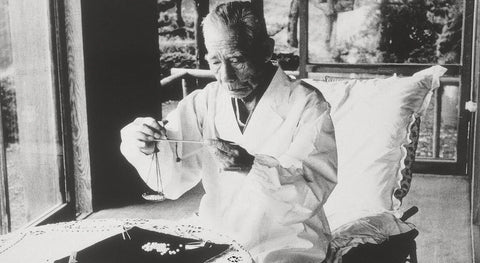
Hello, my pearlies!
Aww, how time flies and how I completely forgot to continue to write in my blog, concerning ̶h̶o̶b̶b̶i̶t̶s̶ pearl history!
I have a profound affection for my collection of pearl books, especially the older ones! The crown jewels among these are the autobiographies of historical pearl merchants. I cherish these books for various reasons, one of which is their invaluable contribution to assembling the historical puzzle of pearls. They offer unique perspectives that bridge the past and present, enhancing my understanding of the pearl industry's history.
Continuing this exploration, today I delve further into the early era of the cultured pearl industry. I view this period through the dual perspectives of the last century's moderns and contemporary insights, allowing for a multifaceted understanding of this fascinating field.
So here is the part II. Read the Part I here.
First Patents
Kokichi Mikimoto, a shrewd and forward-thinking businessman, secured a patent in 1896 for an ancient Chinese pearl cultivation method.
His initial productions were hemispherical pearls, known today as Akoya Mabé. He crafted these by slicing and fusing two halves of a shell, a technique that paved the way for the commercial cultivation of blister pearls.
By 1902, Mikimoto had achieved a significant breakthrough in mass-producing blister pearls, with a million mollusks charged with hemispherical nuclei. This success brought Mikimoto Pearls to the forefront, gaining popularity across Japan, China, Europe, and the USA.
Determined to innovate further, Mikimoto pursued the cultivation of spherical pearls. His goal was to replicate the esteemed "oriental pearls" - the name given for centuries and millennia to the natural pearls of the Persian Gulf. In 1905, he wrapped the nucleus in living mantle tissue from another mollusk, using epithelial cells crucial for natural pearl formation. He utilized natural pearls and mother-of-pearl beads as nuclei, leading to pearls that did not crack or explode when drilled, unlike those with metal cores. It is also noted that inside the first Mikimoto pearls were found beeswax as the core (source - Leonard Rosenthal 'The Pearl King').
In 1908, Mikimoto patented this groundbreaking method, believing he had discovered the world's first technique for cultivating spherical pearls.
Tokichi Nishikawa and Tatsuhei Mise
In 1901, marine biologist Tokichi Nishikawa was sent to work at the Arafura Pearling Fleet in the Australian Torres Strait. The company employed about 2,000 divers, who collected shells for mother-of-pearl. There Nishikawa first encountered pearls, and most likely participated in some way in the successful experiments in growing spherical pearls conducted by Sir William Saville-Kent. The English aristocrat, completely devoid of commercial acumen, was not interested in the business aspect of the matter; he acted purely from a scientific point of view. On the contrary, Nishikawa saw a great business opportunity. Returning to Japan in 1905, he started experiments using silver and gold beads as nuclei, placing a small piece of mantle tissue next to the nucleus to grow pearls.
Just three years earlier, another Japanese biologist, Tatsuhei Mise, had performed an almost identical operation using silver and lead cores, and successfully grew several small pearls in 1904. And Nishikawa obtained a similar crop in 1907.
Both applied for patents, and disputes began. Eventually, an agreement was signed allowing both patents to be used. However, the final patent for the entire process was rejected, as it was covered by a part of the patent granted to Mikimoto in 1896. A far-sighted and shrewd man, huh? He did not sue or quarrel with the young men, and Tokichi Nishikawa soon married one of Mikimoto's four daughters, and Mikimoto began using the Mise-Nishikawa method (under that name it entered the history of pearl culture) as a family one, which was less labor-intensive than his own, and resulted in a larger number of not just spherical, but also more round pearls.

So, in 1916, Mikimoto revolutionized the pearl industry by mass-producing cultured Akoya pearls and establishing numerous pearl farms. His pearls were embraced as symbols of national innovation in Japan. Meanwhile, the global jewelry market, largely unaware of this breakthrough, was on the brink of a major shift away from natural pearl trade, thanks to Mikimoto's pioneering work.
To be continued....

